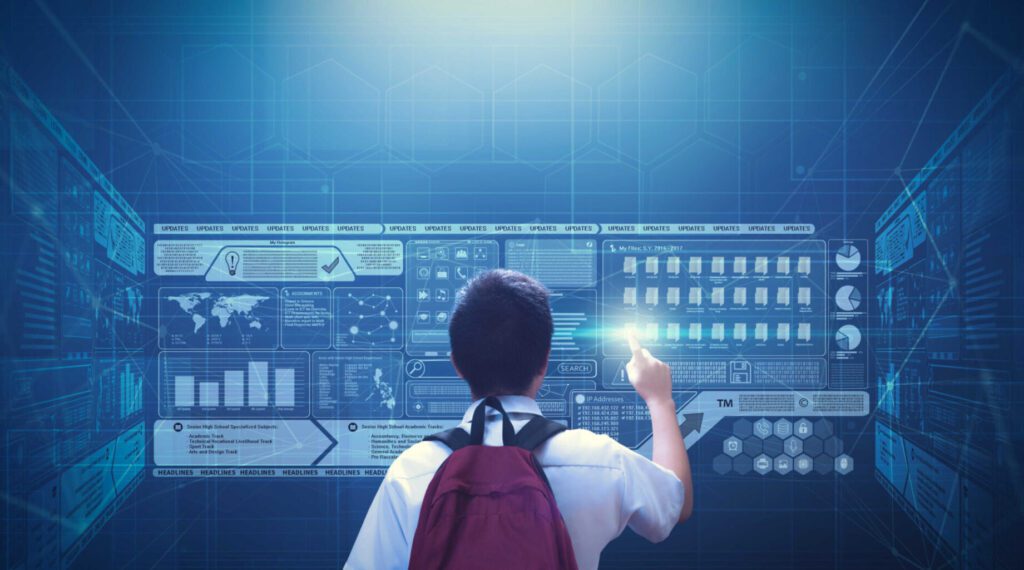In our journey through the corridors of knowledge, we’ve seen how chalkboards turned into interactive whiteboards and textbooks transformed into tablets. This transformation isn’t just a change in tools; it’s a shift in how we approach learning and teaching. But what exactly has been technology’s impact on education? Let’s dive into this exploration together.
The Digital Classroom

Imagine a classroom not bounded by four walls but extended to the corners of the earth. Digital classrooms allow students to interact with peers worldwide and access resources at the click of a button. The integration of digital tools into education has turned the traditional learning environment on its head, making learning a dynamic and interactive process.
Personalized Learning
Every student is unique, with their own pace and style of learning. Technology allows for personalized learning experiences through adaptive software, tailored lesson plans, and interactive platforms. Like a tailor crafting a suit to fit one person perfectly, educational technology can customize learning to fit the needs of each student.
The Accessible World of Education
Education is no longer a privilege for the few but a right for all, thanks to technological advancements. Students with disabilities or those living in remote areas can now access quality education, breaking down barriers that once seemed insurmountable.
Teachers as Guides in the Techno-Jungle
With technology, the role of teachers evolves from the source of all knowledge to guides in a world rich with information. They navigate students through the vast digital jungle, emphasizing critical thinking and discernment.
Collaborative Learning Across Borders
Technology has erased geographical boundaries, enabling collaborative learning experiences that were once impossible. Students from different cultures can now work together on projects, fostering a global perspective and mutual understanding.
The Gamification of Education
Learning can be fun, and gamification proves just that. By integrating game elements into educational content, students find themselves more engaged and motivated to learn, turning mundane tasks into exciting challenges.
Data-Driven Decisions for Better Outcomes
In the age of information, data is king. Educational technology provides teachers and institutions with valuable data to make informed decisions about teaching methods, curriculum design, and student support, leading to improved educational outcomes.
Preparing for the Digital Age

Education technology isn’t just about enhancing current teaching practices; it’s about preparing students for the future. By integrating technology into the curriculum, we equip students with the digital skills they need to succeed in the ever-evolving job market.
Challenges of Tech-Driven Education
While the benefits are vast, the challenges cannot be ignored. Issues such as digital literacy, privacy concerns, and the digital divide pose significant hurdles to the effective integration of technology in education.
Bridging the Digital Divide
The digital divide remains a critical issue, with disparities in access to technology affecting educational equity. Addressing this divide requires concerted efforts from governments, institutions, and communities to ensure all students have the tools they need to succeed.
The Future of Education with Technology
As we look to the future, technology’s role in education only seems to expand, promising even more innovative approaches to learning and teaching. By embracing these changes, we can unlock a world of possibilities for the next generation.
Conclusion: Embracing the Change
The impact of technology on education is profound and far-reaching. By understanding and leveraging this impact, we can transform the educational landscape, making it more inclusive, engaging, and effective. Let’s embrace this change and pave the way for a brighter educational future.
FAQs
1. How does technology personalize learning experiences?
Through adaptive software and interactive platforms, technology can customize educational content to meet individual learning styles and paces.
2. Can technology in education help students with disabilities?
Absolutely. Technology provides various tools and resources that make education more accessible to students with disabilities. From text-to-speech software and audiobooks to adaptive keyboards and interactive learning platforms, technology can cater to a wide range of needs, ensuring all students have equal opportunities to learn and succeed.
3. What are the challenges of integrating technology into education?
Integrating technology into education comes with challenges such as ensuring equal access to digital tools for all students, maintaining student privacy and data security, training teachers effectively, and avoiding over-reliance on technology which can lead to a lack of critical thinking skills.
4. How does technology change the role of teachers?
Technology shifts the role of teachers from being the sole source of information to facilitators of learning. They guide students through the vast amount of information available online, help develop critical thinking skills, and encourage collaboration and creativity.
5. What steps can be taken to bridge the digital divide in education?
Bridging the digital divide requires providing affordable access to technology and the internet, offering digital literacy training for students and teachers, and ensuring educational content is culturally relevant and accessible to all students. Collaboration between governments, educational institutions, and private sectors can also play a crucial role in overcoming this challenge.

